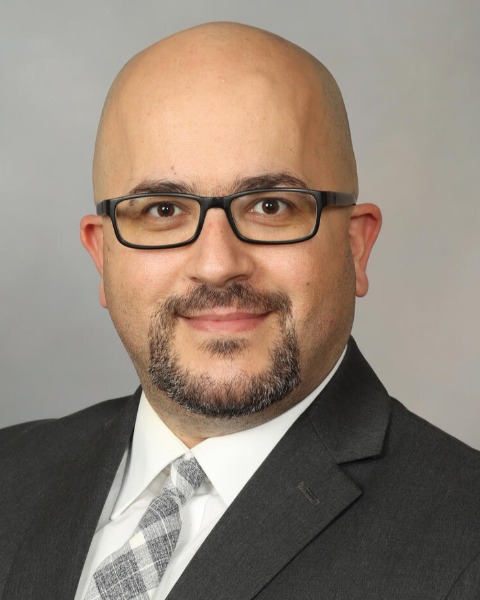Adult Cardiac
Category: Scientific Abstract: Oral/Poster
Robotic “Reverse” hybrid coronary revascularization: Indications, short and Midterm Outcomes
Y. Nabeel. AlJamal1, R. Bhasin2, S. Nisivaco3, H. Kitahara4, H. H. Balkhy5
1Mayo Clinic, Rochester, Minnesota 2University of Chicago, Chicago, Illinois 3University of Chicago Medicine, Chicago, Illinois 4The university of Chicago, Chicago, Illinois 5The University of Chicago Medicine, Chicago, Illinois
1Mayo Clinic, Rochester, Minnesota 2University of Chicago, Chicago, Illinois 3University of Chicago Medicine, Chicago, Illinois 4The university of Chicago, Chicago, Illinois 5The University of Chicago Medicine, Chicago, Illinois

Yazan Nabeel AlJamal, MD (he/him/his)
Cardiothoracic Surgery Fellow
Mayo Clinic
Rochester, Minnesota, United States
Presenting Author(s)
Disclosure(s):
Yazan Nabeel AlJamal: No financial relationships to disclose
Purpose: Reverse hybrid coronary revascularization (RHCR) is the integration of percutaneous coronary intervention (PCI) followed by sternal-sparing coronary artery bypass grafting in patients with multivessel coronary artery disease. We sought to review our RHCR experience over a 10-year period using PCI first followed by robotic totally endoscopic coronary artery bypass (TECAB).
Methods: From 3/2014 to 3/2023, 780 robotic totally endoscopic coronary artery bypasses (TECAB) were performed at our institution. Of the 346 patients who underwent TECAB assigned to a hybrid revascularization strategy, 51 patients underwent RHCR (PCI with drug-eluting stents first, followed by TECAB) and are the subject of this review. We reviewed the indications for the RHCR and early and midterm outcomes in this cohort of patients.
Results: The mean age of patients was 66.8 +/- 10 years and 72.5% were male. The body mass index and The mean Society of Thoracic Surgeons predicted risk of mortality were 27.8 +/-5.23 and 1.46 +/-1.42, respectively. All patients had multivessel coronary artery disease with the left system involvement. The target vessel stented was the: right coronary artery in 44 (86%) patients, circumflex coronary artery in 9 (17%) patients, and LAD in 2 (4%) patients. Average time from PCI to TECAB was 3.5 months (SD?). A total of 30 patients (59%) underwent multivessel grafting, with 74% bilateral IMA use. The mean operative time was 249+/-88 minutes, and the mean hospital length of stay was 2.18+/-0.76 days. There were no conversions, perioperative stroke, or myocardial infarction. At 10-year follow-up (mean 42.7+/-29 months), cardiac-related mortality occurred in one patient. Freedom from major adverse cardiac/cerebrovascular events including repeat revascularization was 94%.
Conclusion: Reverse hybrid coronary revascularization is safe and feasible in selected patients with multivessel CAD. In experienced hands, stenting first followed by robotic totally endoscopic coronary artery bypass with LITA or BITAs resulted in excellent early and midterm outcomes. Further studies are warranted.
Identify the source of the funding for this research project: None
